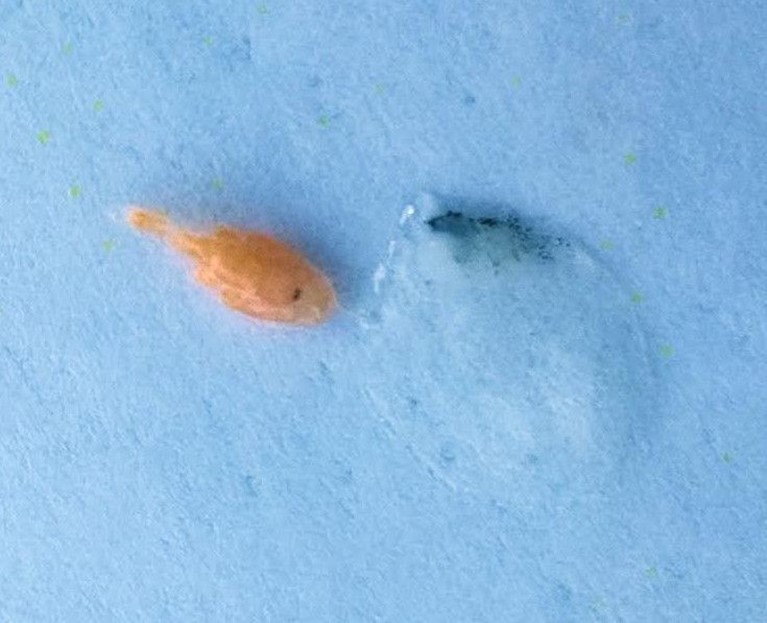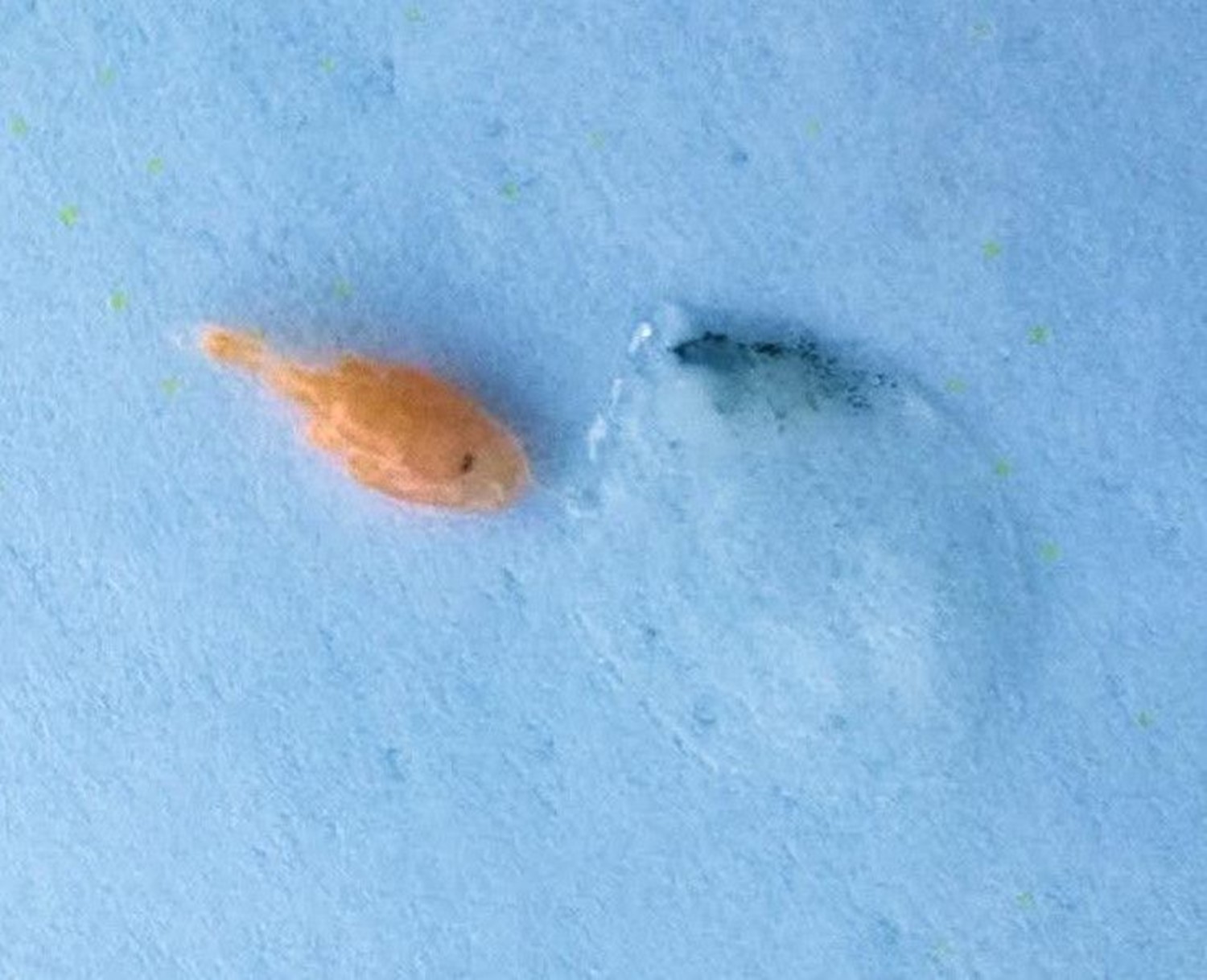When a louse attaches itself to the fish, it is no larger than a scant millimetre in size. On the fish the lice grow larger and can become up to well over one centimetre. There are two kinds of lice capable of living on farmed fish, and these are salmon lice and sea lice. The latter kind can also live on lumpfish.
While the lice are very small – about three millimetres – it is not possible to tell what kind of louse any given individual is. The smallest lice are called attached lice, because they attach themselves securely onto the fish and therefore cannot move around on the fish until they grow a bit bigger.
Fiskaaling regularly carries out research on behalf of the industry, where among other things the insides of lumpfish stomachs are examined to find out what they have eaten. In this regard the smallest and attached lice are frequently found in lumpfish stomachs. However, because we have been unable to say for certain whether a given louse was attached to a salmon or to a lumpfish, it has been difficult to ascertain whether the lumpfish took the louse from a salmon or from another lumpfish.
Even so, Fiskaaling recently found an attached louse in a lumpfish stomach, which was still attached to a salmon scale (see image). Lumpfish do not have scales, and this small louse was therefore with certainty eaten off a salmon.
For some, this may not seem like breaking news, but for the aquaculture industry it is of great importance, since as far as we know this is the first confirmation of lumpfish being able to eat attached lice off salmon.
Should anyone wish to know more about this, they are welcome to contact Kirstin Eliasen, tel. no. +298 774703.


